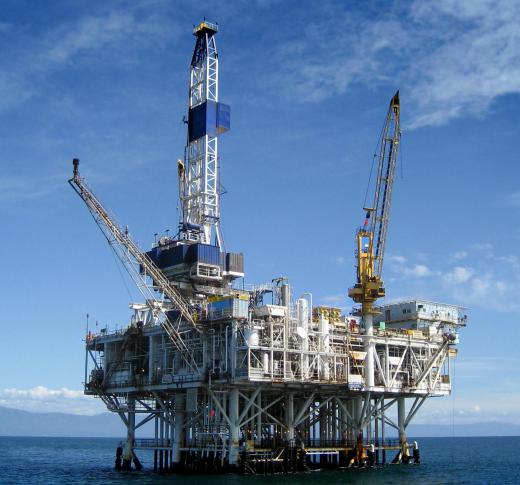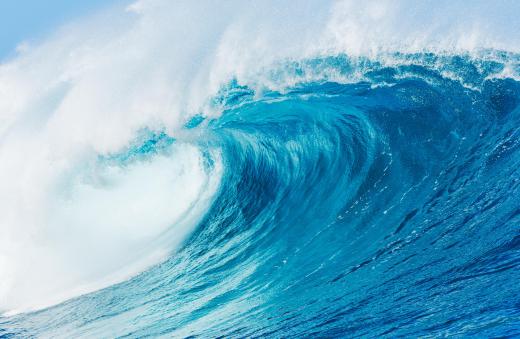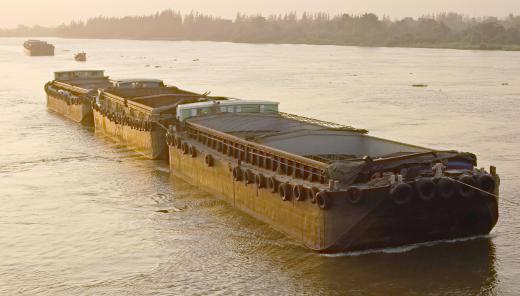A fixed platform is a permanent structure attached to the ocean floor, often for the purpose of offshore oil drilling. Most of the working space of such a platform is raised above the surface of the sea by rigid supports made of steel or concrete. This sets a fixed platform apart from mobile platforms, which float on the surface of the sea and are anchored to the ocean floor by more or less flexible moorings. Fixed platforms are typically deployed in water less than 1,700 feet (520 meters) deep, with deeper drilling operations requiring more complex mobile rigs.
The first productive offshore oil wells were drilled in Ohio's Grand Lake St. Marys State Park in 1891, using fixed platforms set on wooden piles in the lake bottom. By 1947, the first fixed platform drilling rig situated beyond the sight of land was constructed in the Gulf of Mexico. Fixed platforms were the most common method of offshore drilling for most of the 20th century, although the first mobile drilling rigs were operational by the early 1930s. Due to their high degree of stability, depth restriction, and high cost, modern fixed platform rigs are limited to long-term drilling operations in shallow water.

Fixed platforms are directly attached to the ocean floor by a structural support known as a jacket. Early jackets consisted of concrete pilings, while modern deep-water jackets are complex towers of tubular steel supports. The base of a jacket may be several times broader than the top, and they are often driven deep into the mud of the ocean floor for support. Jackets are partially or wholly constructed on shore and shipped to the platform location on tug-hauled barges. Once there, they are lowered to the ocean floor with the help of ROVs, and driven into place using barge-mounted pile drivers.

The decks that form the working space of a platform are generally constructed in shipyards or sheltered bays. While early decks were towed into place on barges, many modern decks are built to float during transit. They are lifted atop the waiting jacket using systems of hydraulic jacks or crane barges, and are usually set high enough above the waterline to avoid all but the largest waves. The decks may be up to 200 feet (60 meters) across, and consist of multiple levels of working and living areas.

If a fixed platform is close to shore, it may pump oil directly from the drilling site to onshore storage facilities through pipelines laid along the ocean floor. In the case of drilling operations further from land, the platform must include large storage tanks which hold the oil until it can be transferred to an oil tanker. Storage tanks are often located below the waterline, where they serve as ballast to help the platform resist the force of waves and currents.
